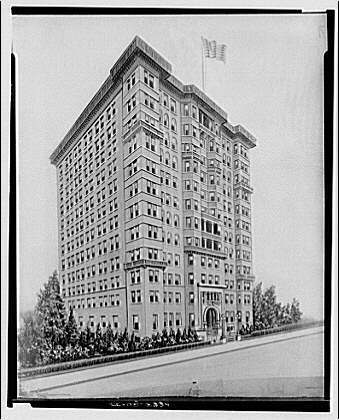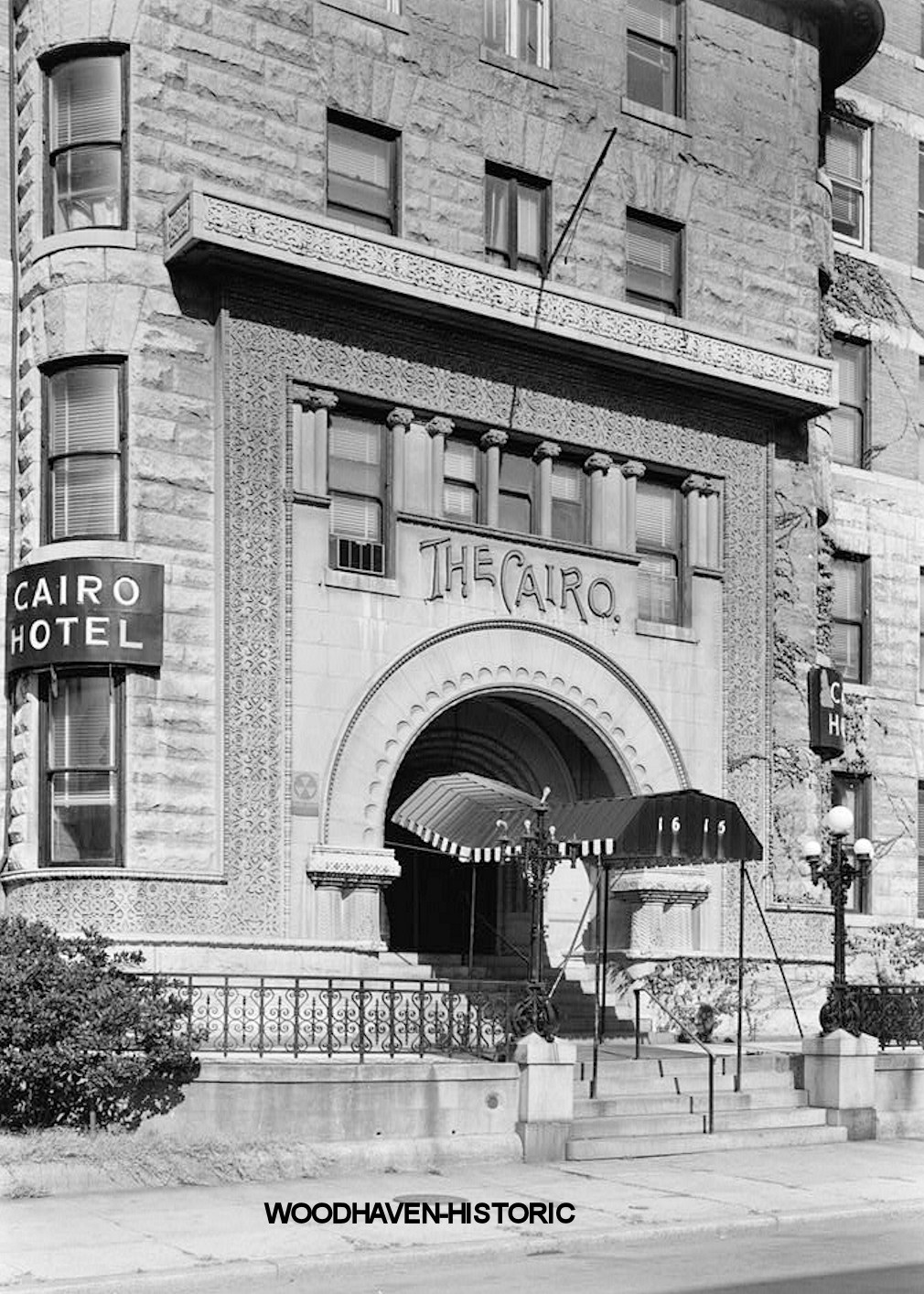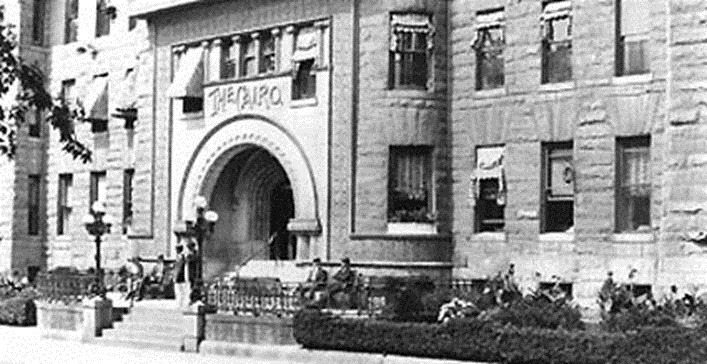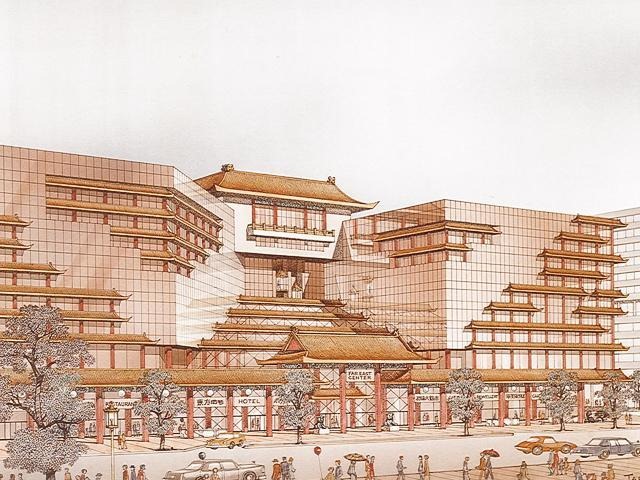By Dana Hull
Washington Post Staff Writer
Saturday, May 18, 1996; Page E01
Few residential buildings in the Washington area are as notorious as the Cairo, a 169-unit condominium at 1615 Q St. NW. Twelve stories and 156 feet tall, the building towers above much of the District’s skyline and its rooftop deck has long been a favorite spot from which to watch the Fourth of July fireworks.
The Cairo, constructed in 1894 by architect Thomas Franklin Schneider, was listed on the National Register of Historic Places in 1994. When it was built its unprecedented height prompted the D.C. Board of Commissioners, which governed the city at the time, to pass a regulation that limited the height of future residential buildings. In 1910 Congress intervened and passed a law, which still stands today, to limit the height of District buildings to 130 feet.
These days the Cairo is a coveted place to live. Stylish, secure, relatively affordable and located at the heart of Dupont Circle’s 17th Street commercial district, the building is accessible to just about everything.
“Where else in the city can you walk to Safeway, Java House, restaurants, bars, anything else you need?” said Lou Patierno, a Cairo resident for 2 1/2 years and president of the owners association. Patierno once lived at the Lansburgh building on lower Eighth Street NW, but moved to the Cairo because of its location.
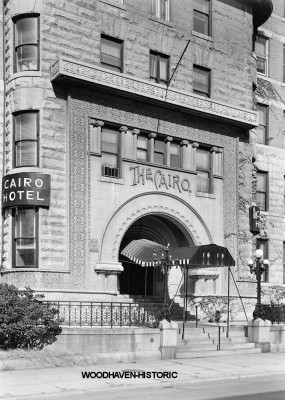 While the building is a condominium, there are rentals available, with studio apartments at about $600 a month plus utilities, one-bedroom units for $800 to $850 plus utilities and two-bedroom units for $1,100 to $1,300 plus utilities.
While the building is a condominium, there are rentals available, with studio apartments at about $600 a month plus utilities, one-bedroom units for $800 to $850 plus utilities and two-bedroom units for $1,100 to $1,300 plus utilities.
Compared with other condominiums, condo fees at the Cairo are low, with the fee on a two-bedroom apartment about $250 a month. The fees go into a special reserve fund that is periodically tapped for restoration projects. Plans are underway to revamp the roof deck. At the moment it is a simple plywood platform surrounded by railings, but by next year owners hope to have it upgraded and landscaped with trees and plants.
“The linchpin of current restoration is the roof deck,” Patierno said. “There haven’t been any structural changes to the roof since 1904. The new deck will be visible from the street; people will be able to see the trees.”
In its heyday at the turn of the century, the Cairo was a hotel complete with a coffee shop that sold whiskey, a bowling alley, a billiard room, a restaurant and a bakery. Novelist F. Scott Fitzgerald once was listed on its registry, as was Thomas Edison. The hotel deteriorated after World War II and became a building of ill-repute; newspaper clippings referred to the Cairo as one of the city’s “deeper dens of iniquity.”
“Everyone in this neighborhood has a story about the building,” Patierno said.
By the 1960s, the deteriorating hotel was occupied by squatters, drunks and elderly pensioners who couldn’t afford to live anywhere else. Prostitution thrived, and the Cairo was the city’s best known flophouse.
It was boarded up in 1972 and eventually sold to a new developer, Inland Steel, which hired architect Arthur Cotton Moore to oversee its restoration. The Cairo reopened in 1976 as an apartment complex, and converted to condominiums in 1979.
“The building is always full,” said Roger Tilton of Abaris Realty, which has managed the Cairo since 1981. “We always have a few people on a waiting list as well.”
Each condominium is individually owned, but owners are free to rent the units. The building is 70 percent owner-occupied, with 30 percent tenants. There are 44 small studio units, 66 one-bedroom condos, 59 two-bedroom units and a few duplexes. There are 14 units on each floor.
“The apartments are fairly small and modest,” Tilton said. “It appeals to younger people, single people. We get a lot of first-time buyers, many of whom end up staying for a long time.”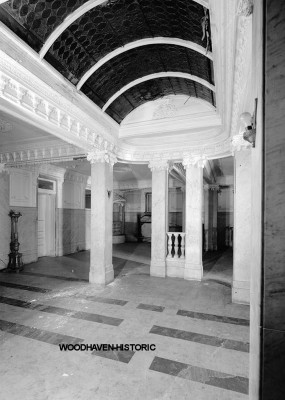
Aimen Elkhatib used to be the resident manager and is now the maintenance person. He lived in the Cairo until he had children, and moved to a bigger place nearby. He’s a familiar sight around the property and knows all of the tenants.
“We have a lot of young professionals, students, lawyer types,” Elkhatib said with a smile.
From Q Street, the Cairo’s evident age gives testimony to its colorful history. An imposing entrance features a Moorish Revival carved frieze and Romanesque Revival arch. Plush maroon couches and gold wallpaper line the lobby, which has security 24 hours a day.
It’s classy, and yet a variety of tenants enter and exit, some with bicycles, some with dogs — owners are allowed to have pets. There are no parking facilities, but many of the tenants find keeping cars in the city more of a nuisance than it’s worth. The Cairo is just a few blocks to the Dupont Circle Metro station.
“If you are going to live in the city, I can’t imagine living anywhere but Dupont,” said Paul William, a retired professor who’s lived in the Cairo for nearly 20 years. “And the roof deck is really nice. Whenever I have visitors in town we always go on up to the top.”
Patierno said, “There’s a constant stream of people coming in and asking if there’s anything for rent or for sale.” He owns his two-bedroom apartment as well as another one-bedroom unit and an efficiency in the building. There now are four apartments for sale, including a one-bedroom unit for $105,000 and a two-bedroom for $119,000. Word about openings in the Cairo travels primarily by mouth.
“There are a lot of referrals,” Tilton said. “Three or four of our last sales have all been to people who have friends in the building.”
On any given weekend day, the massive stoop of the Cairo is full of tenants sunning themselves or reading the newspaper. Neighbors know each other from their hallways.
“We’re a community here, and we try to preserve people’s happiness and safety,” Patierno said.